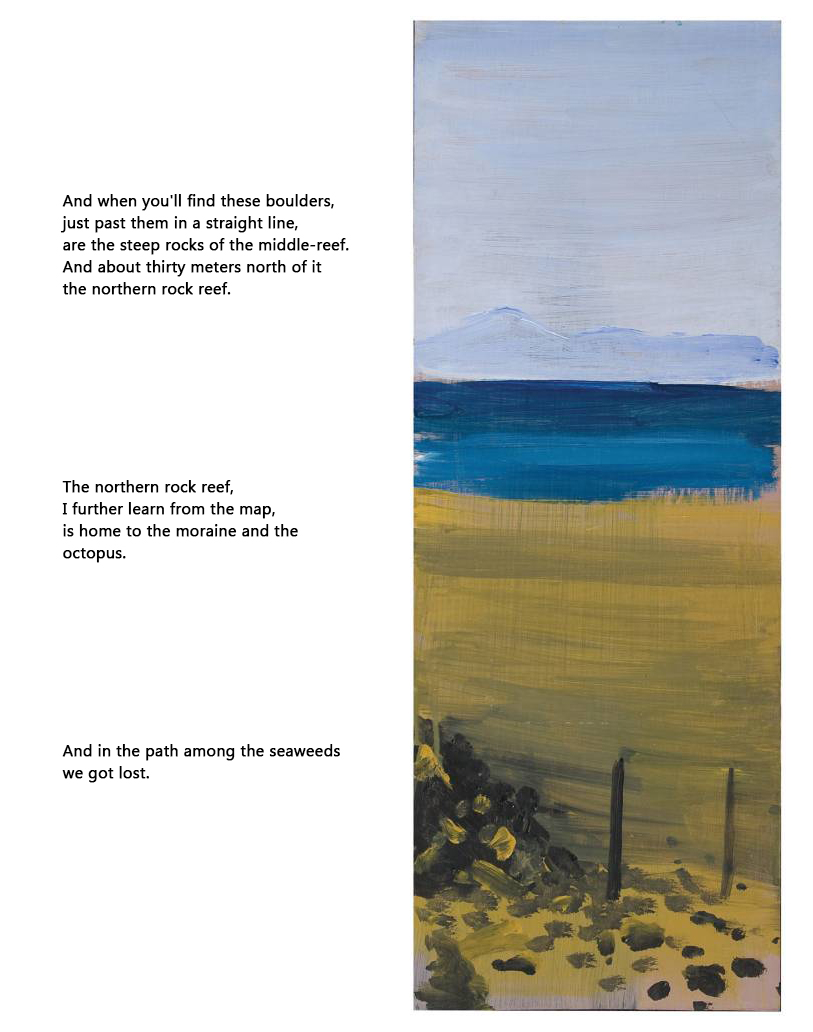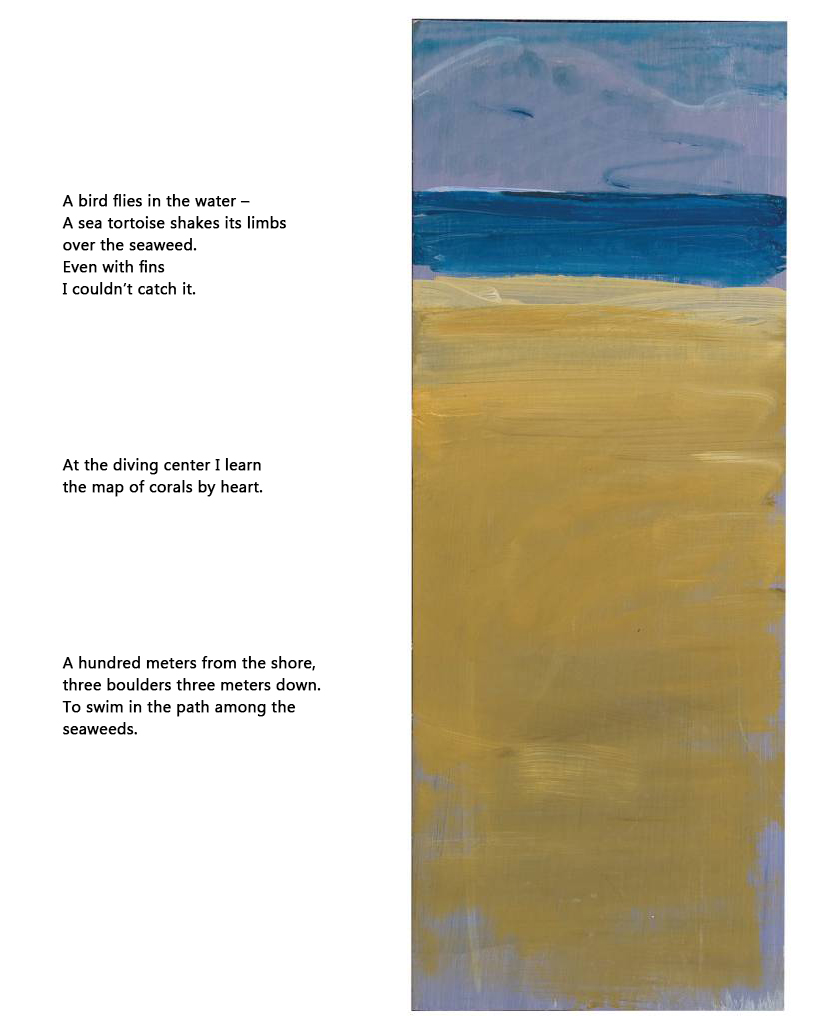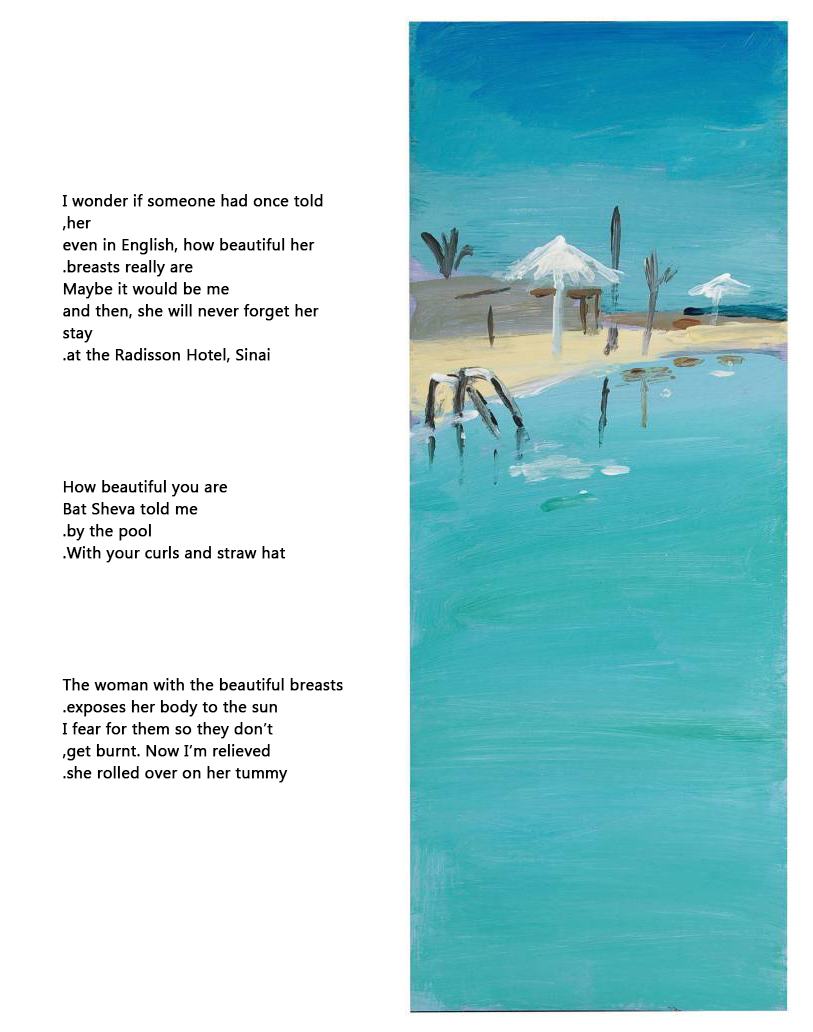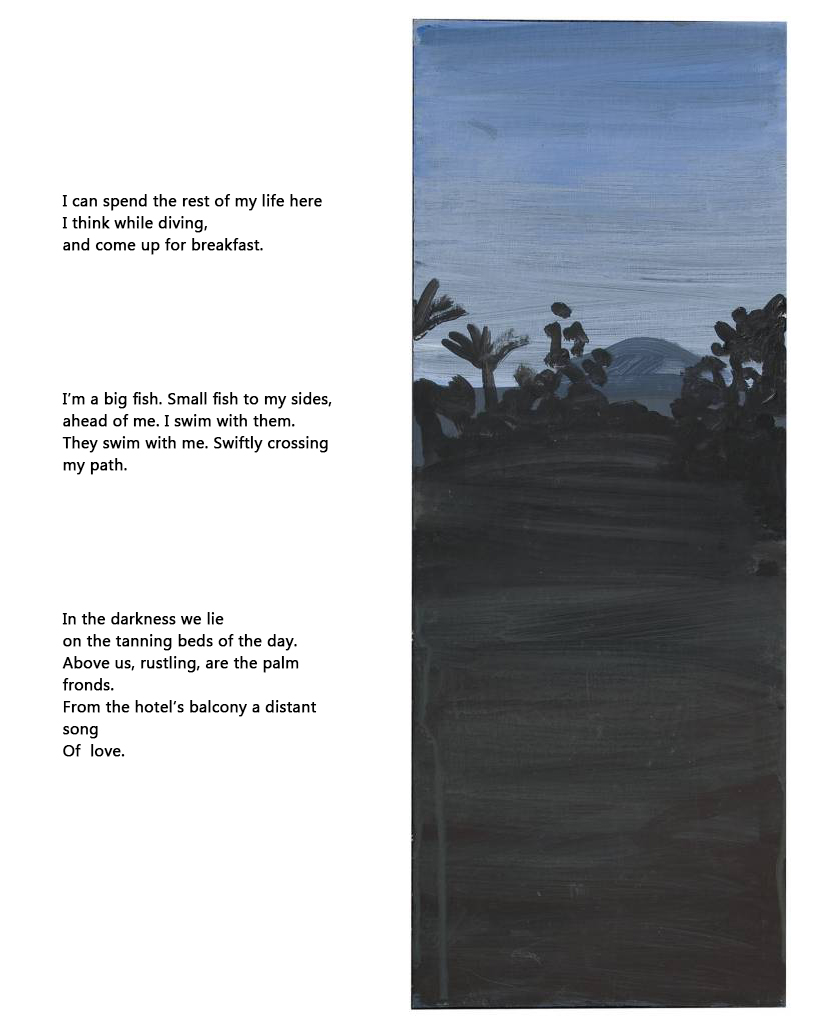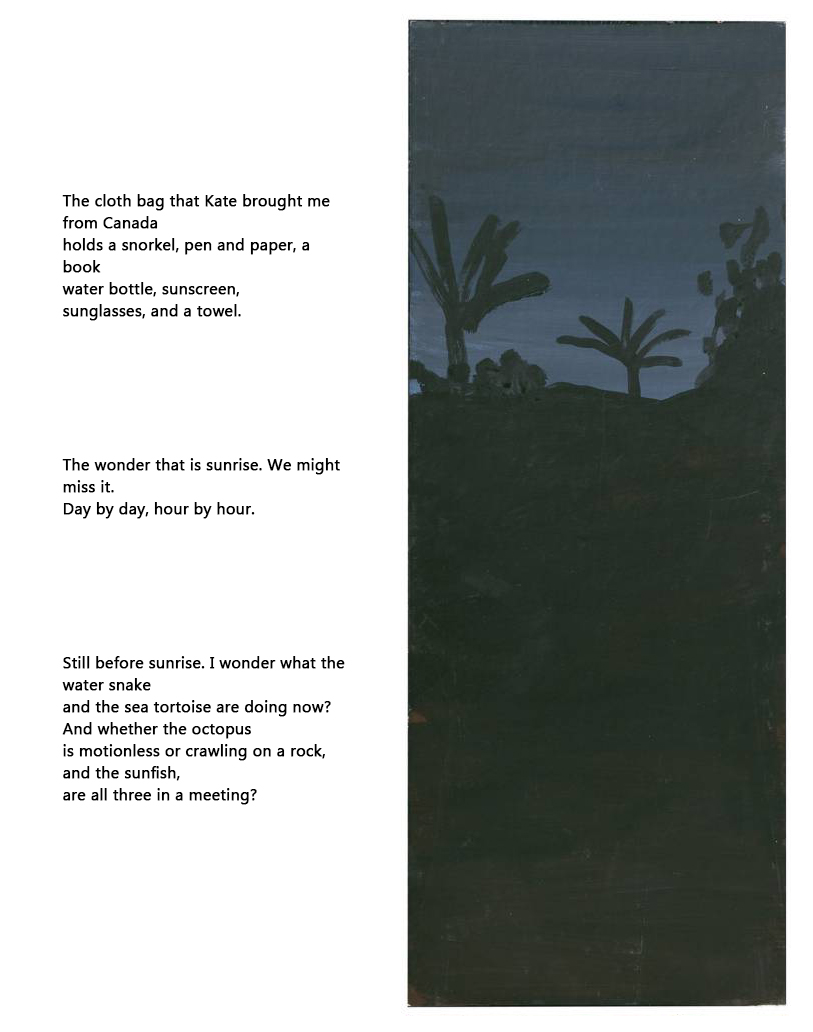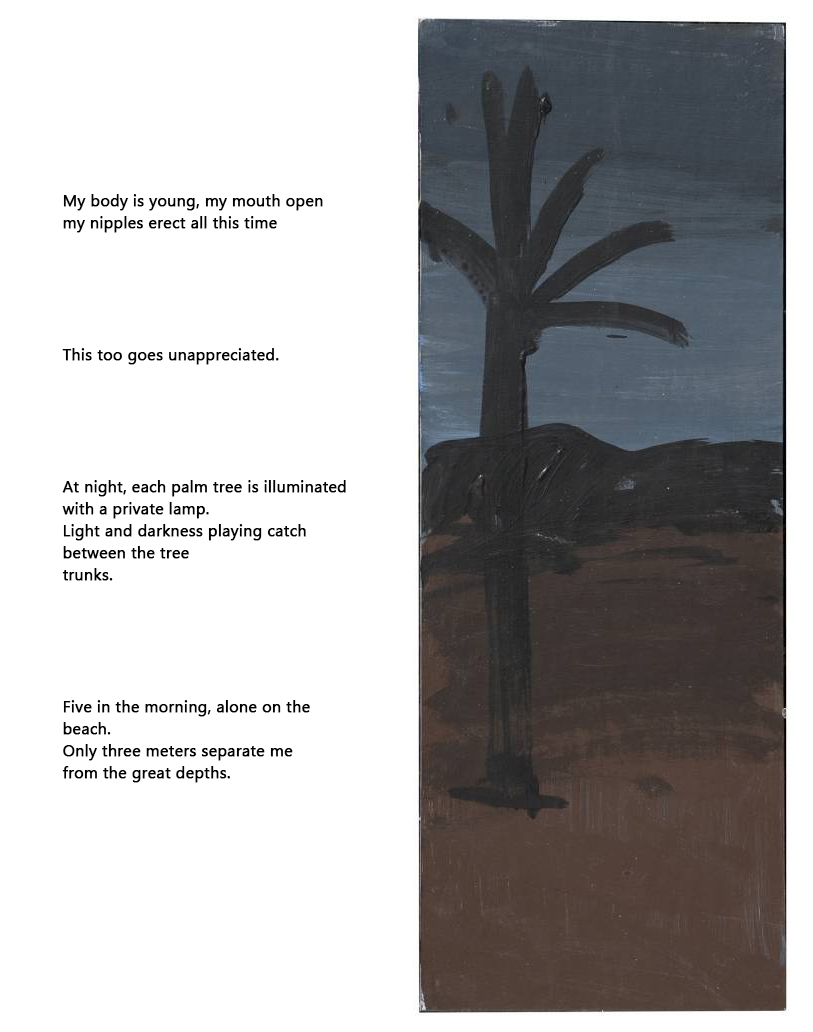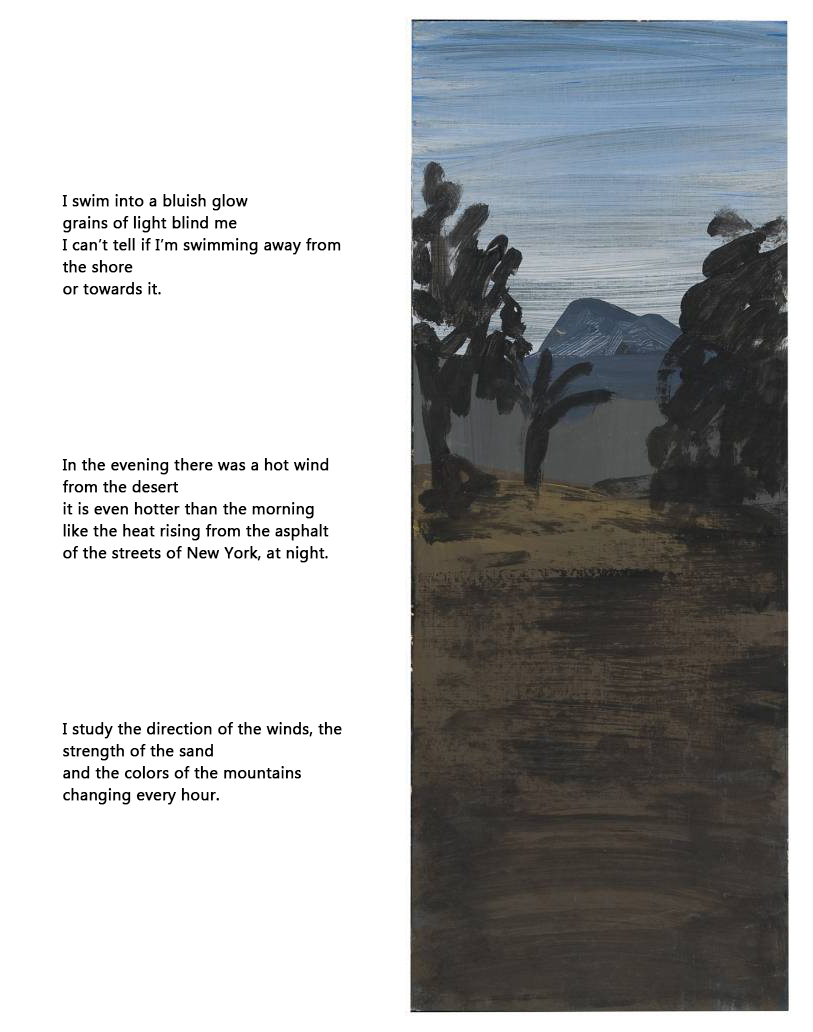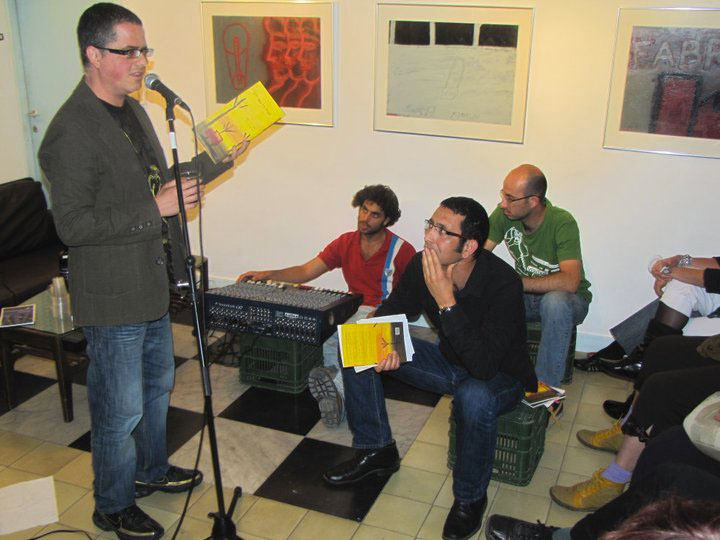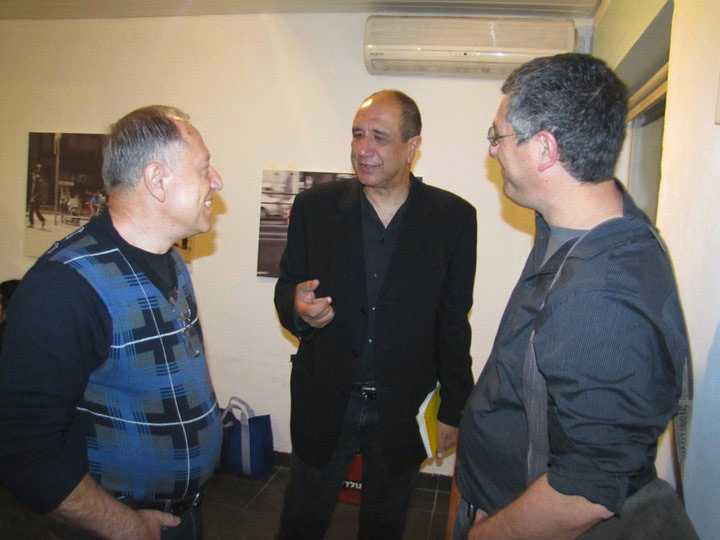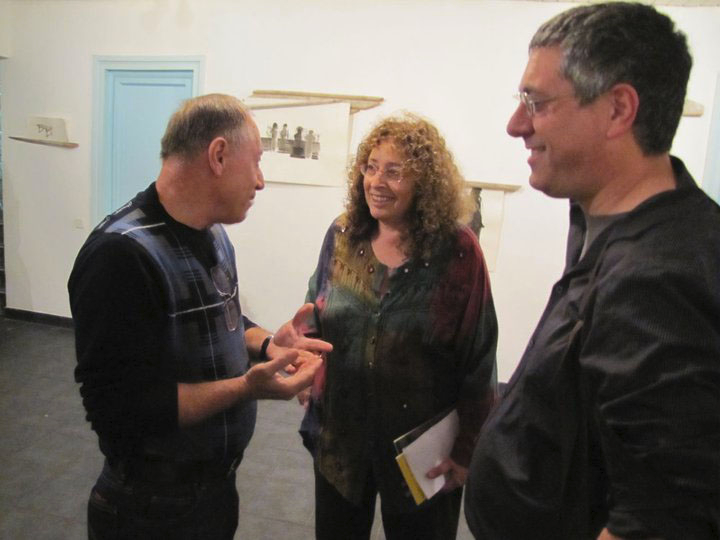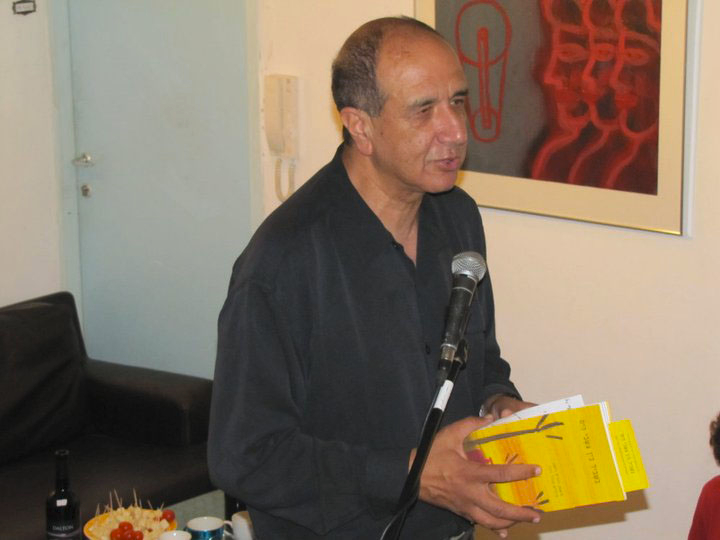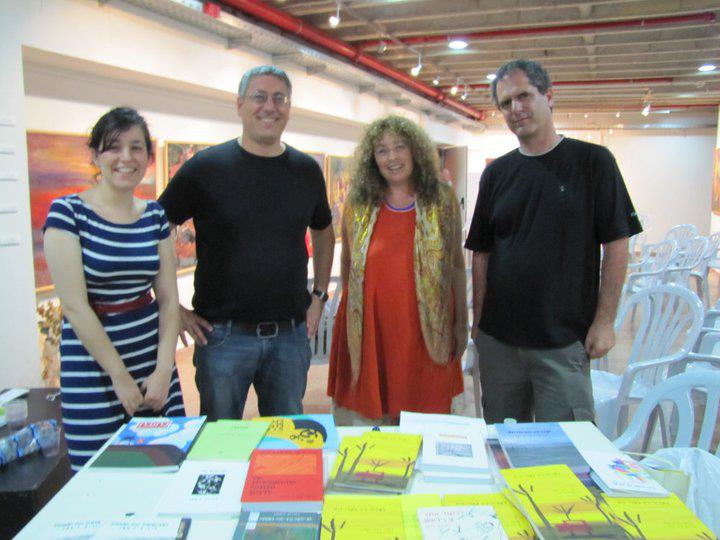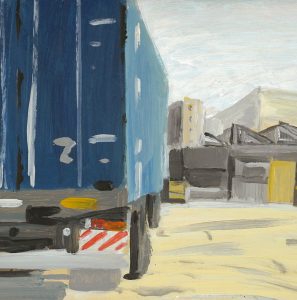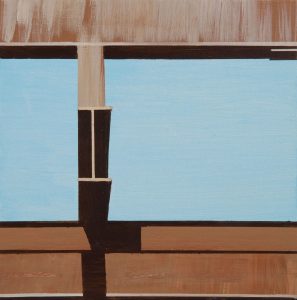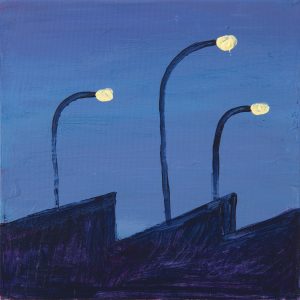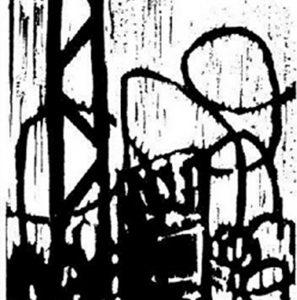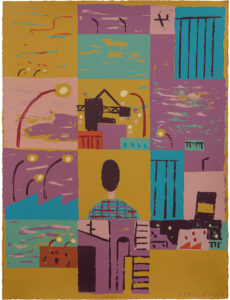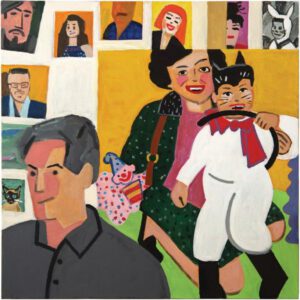On the Path Among the Seaweed
A book with a poem by Dorit Weisman and my paintings
The launch party took place in May 2011, at the Spaceship Gallery, Tel Aviv
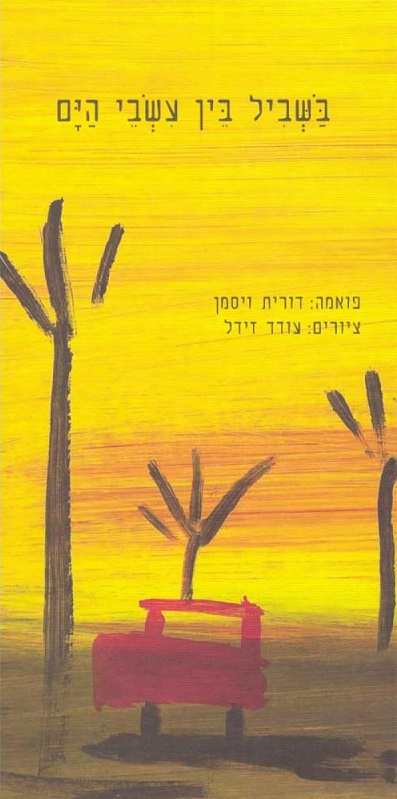
Dorit Weisman
On the occasion of Launching On the Path between the Sea Grass, Spaceship Gallery, Tel Aviv, 14.5.11
Poetry is yet another world, another world where we can live and enrich our lives. Nature too is a world. Here, in this book, we have poetry and nature. I will touch on painting a little later on.
We all had some part in nature, which was greater when we were small. We hung around yards, groves, by the water.Words like cypress, river, wadi, eucalyptus, cheeseweed, wave, pebble, slingshot, bike, bike journey, orange tree, bitter orange, lemon—these words speak to us. We may have moved away and got a little lost in the neon-lit halls of the shopping malls, inside the dark corridors of our homes. Yet, occasionally one can return to what makes one feel good, what brings one joy.
True, I live in a city. I have no plot of land. However, once in a while it is important for me to get a “shot of nature” injected into my veins, which I take care to provide myself with. Whether it’s eating a sandwich in a grove in the city instead of inside a closed room, or driving on a narrow sideway between woods,or if it’s a family outdoors picnic which, by the way, is the present I ask my family for on each birthday.
There is harmony in nature. Nature is simply there. From it, we learn defenselessness, the principle of harmony and love. We don’t have to do a thing to acquire everything. Simply to be there. What Deepak Chopra calls The Law of Least Effort (from The Seven Spiritual Laws)the principle of least action,defenselessness, harmony and love. Once we learn this lesson from Nature, we easily fulfill our wishes.
“Do less, achieve more.” You don’t have to do anything in order to attain everything. Minimal effort is put into it when your actions are driven by love, since the energy of love unites nature into one solid piece.
In the words of the poet Zelda: “I was a butterfly / who is inaction / who is impermanence / … who is sovereignty.”
About my relation to Sinai and the Red Sea
For those of you who are not aware of this, my Nahal group was based at Grofit kibbutz, some 40 kilometers north of Eilat. Friends from Grofit later established Nuweiba—or Neviot—in Sinai, where I frequently worked and visited. The colors of Edom Mountains, changing hourly, the colors of the Red Sea, do something to me. I scuba dived a lot, feeling like a fish in water, traversing well among coral reefs. Many years later, on a vacation one might say was of a square and established nature, at a hotel in Sinai, it all came out.
About my relation to Oded and painting
I love it when poetry can be presented in a way different than reading a book.Poems of mine were composed;displayed at an exhibition alongside Nava Segev’s paintings; in a large format on the wall—here is my sestina, also hanging on the wall; I have performed my poems as musically arranged by Noam Rotem;have just now finished making a movie about poetry where poems are read out with visual enrichment; and had a vision of publishing this poem in a book format, with accompanying paintings. I have loved Oded’s paintings for a long time. I approached him: when I saw his paintings to poems of Shai Dotan, my dear friend, I felt like it too. Oded agreed to read the poem and try to use it as an inspiration for painting.
That was where a great danger lurked—for me: what if I didn’t like the paintings? All’s well that ends well: I loved each of the paintings Oded showed me. We discussed their quantity, their order, their suitability to the text. There was one painting Oded based on a painting and a photograph of mine, but mostly he had free hand in that regard, and I am happy for that. There are two media here—poetry and painting—each with its independent life, but together they have an added value. Just like any good couple.
So, first and foremost I would like to thank Oded, who made it possible for me to make one more dream come true.
And to my poet friends who helped me editing the book: Uri Bernstein, Leor Steinberg, Rachel Halfi and Shimon Buzaglo; to you dear people who came here today and made me happy; and to all those who had a part in this evening.
Gilad Meiri
On the occasion of launching On the Path between the Sea Grass, Spaceship Gallery, Tel Aviv, 14.5.11
Dorit’s poetics and Oded’s style are intrinsically different from one another: Dorit’s poetics wishes to touch reality almost tangibly by carnival-like and postmodern means, while Oded’s style moves away from reality through a modernistic mixture of naivety and expressiveness. Here was created, thanks to this meeting of extremities between modernism and postmodernism, an enthralling work of art where the opposites usually complete each other in an original and surprising fashion. Furthermore, a great advantage of this tension of opposites is the setting free of painting from being illustrative. I shall demonstrate the tension of opposites using five major examples:
The central pair of opposites in the book is the tension between major and minor. This also forms the basis for the book’s aesthetic skeleton, wherefrom most of its aesthetic characteristics are obtained. The poem is a nano-poetic narrative work. It is a work constructed from a plot of small fragments. Defining the term nano-poetic, I determined that the nano-poetic poem’s length is up to six lines. All verses of the poem do not extend over six lines. Contrary to the poem’s nano-poetry, the painting is major. The paintings are fashioned by large expanses of color that create a sense of breadth.
The second example is the tension between the song of the details and the painting of the expanses. The poem focuses on the search after the beauty of the small details—both human and natural—and their encounter. The book’s paintings are fashionedin a contrary way to the poem: there are no details in them and the viewer is absorbed into nature’s expanses. Thus, the painting seemingly contains the poem’s many details. The outcome of this tension of opposites is the tension between the dynamic and the passive, plurality and sparsity. The poem is composed of a plurality of small stories and is therefore dynamic, while the paintings lack plots and are relatively passive.
The third example is the tension between the living and the inanimate. The poem deals with humans and animals, while the paintings have no humans or animals in them.
The fourth example is the tension between humor and seriousness. The poem makes endless use of subtle humor, restrained and precise, mostly ironic and parodic, for instance the self-humor at the beginning: “In a five-star hotel / looking at my back / of five decades. / Two folds of fat / on each side.” (6)
This sort of humorous opening is both an existential and a literary declaration of intent—the speaker declares accepting her existential state whatever it is with a benevolent smile. This acceptance allows her to free time for pleasure, celebration and free talk. The paintings, on the other hand, are humorless, but thanks to their naïve style,stretch a bridge between the mediums. Like humor, naivety often has a dimension of softness; the softness is the element that builds the bridge between poetry and painting in the book.
The fifth example deals with two different formal ways to relax that create a unique formal and contextual bridge between the media. As previously mentioned, the poem describes a touristy experience of searching after thrills, but also after serenity. The poem is composed of many quiet spaces. Each page of the book has at least three large pauses between the poem’s verses. This creates a great expanse of white paper, innocent of text.
Those silences create calm. In the paintings, the molding of silences is achieved by a combination of the diet of objects and the desert nature. The desert pastoral in the paintings creates an ambient, an atmosphere, open sound carpets that draw the viewer into quiet internal landscapes.
The aspiration for calmness in the poem, as well as in the painting, exists not only on the formal, but also on the contextual level. After diving, for instance, the speaker shares with us an ambiguous aquatic musing fished from the depths: “After I rise from the deep / it’s hard for me to hear people speak.” (37)
This is a precise description of the effect of meditation on the soul. Meaning, the meditative and emotional effects of poetry and painting combine magically and surprisingly both on the contextual and formal levels, despite the opposing artistic languages.
To conclude, the book as a complete interdisciplinary work breaks the boundaries of poetic and stylistic conventions, but most importantly—it simply is a book pleasant to read.

Oded Zaidel
On the occasion of Launching On the Path between the Sea Grass, Avram Café, Jerusalem, 12.6.11
I was very happy to co-create this book with Dorit.
The Polish/Zionist bit of vacation and idleness mixed with slight pangs of conscience got to me and made me deeply identify. I loved the gall and the humor in our joint decision to publish an artists’ book to a poem whose subject matter is a hotel vacation.
The writing style of the poem moved me deeply: the simplicity and directness of writing with no metaphors and no rhymes. The poem is composed of fragments, each like a haiku trying to capture a moment. When I worked on the paintings, it was important to me to have them sharp and succinct like the poem, to maintain the instantaneous condensed character—like a haiku in painting. Each painting depicts a piece of reality—a hotel room, a pool shed, a palm tree, a Mazda truck, French Hill landscape—a piece describing specified place and time, but also reflecting inner activity.
The book is an independent production of ours. We got help from good professional people, but took full responsibility for each and every detail: the design, the layout, the paper type, printing and cover.
I would like to use this occasion to thank the distinguished publishing houses who politely refused us when we approached them at the beginning of the way, without whom this book would have not come out the way it did.
And a heartfelt thank you to whoever supported and helped!

